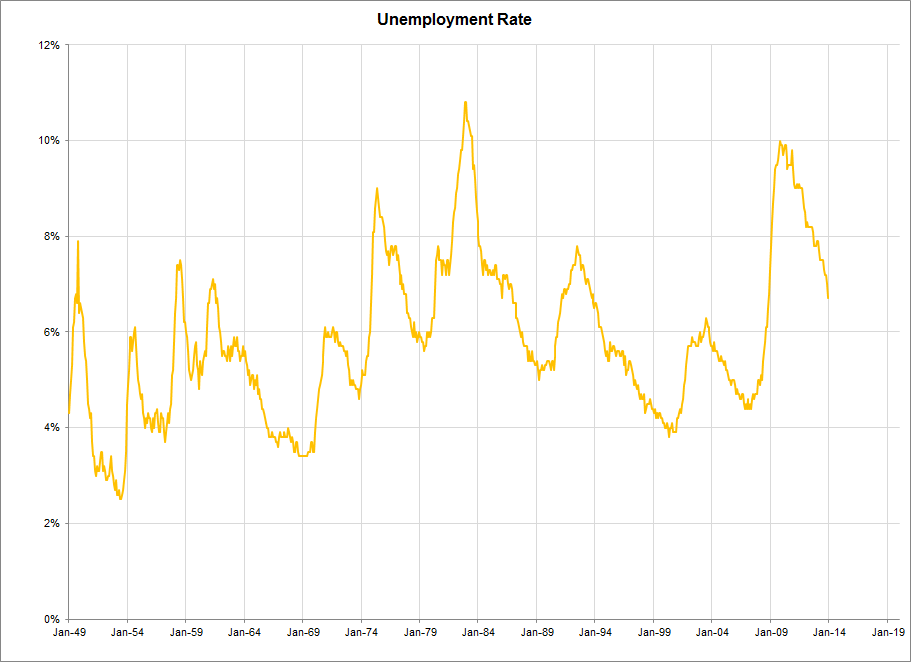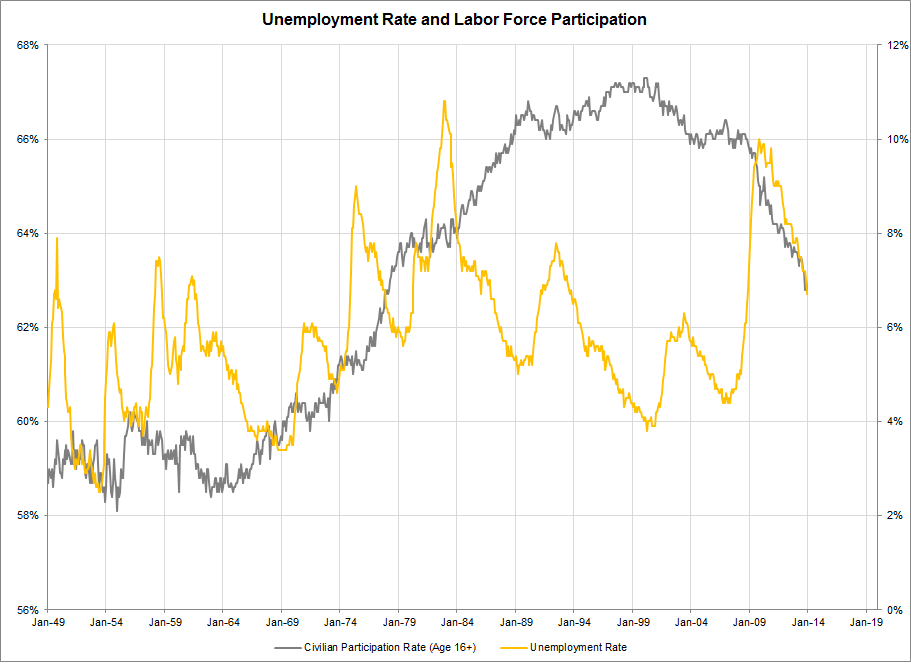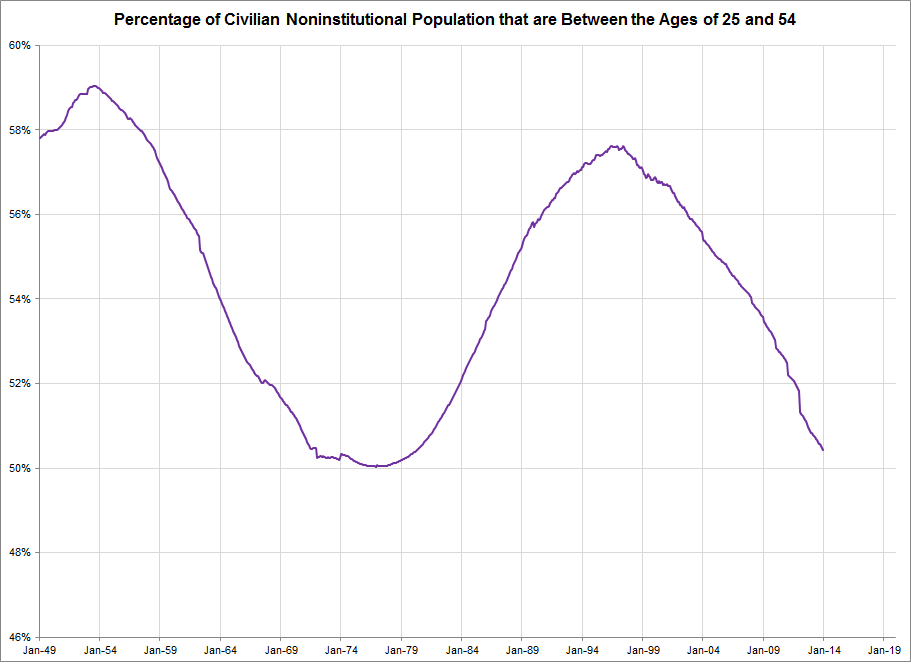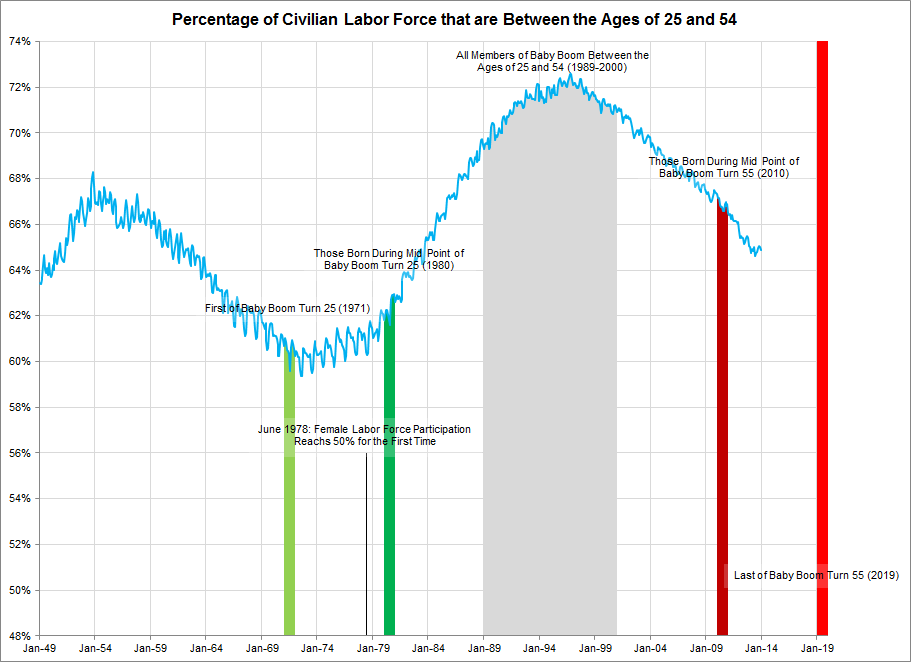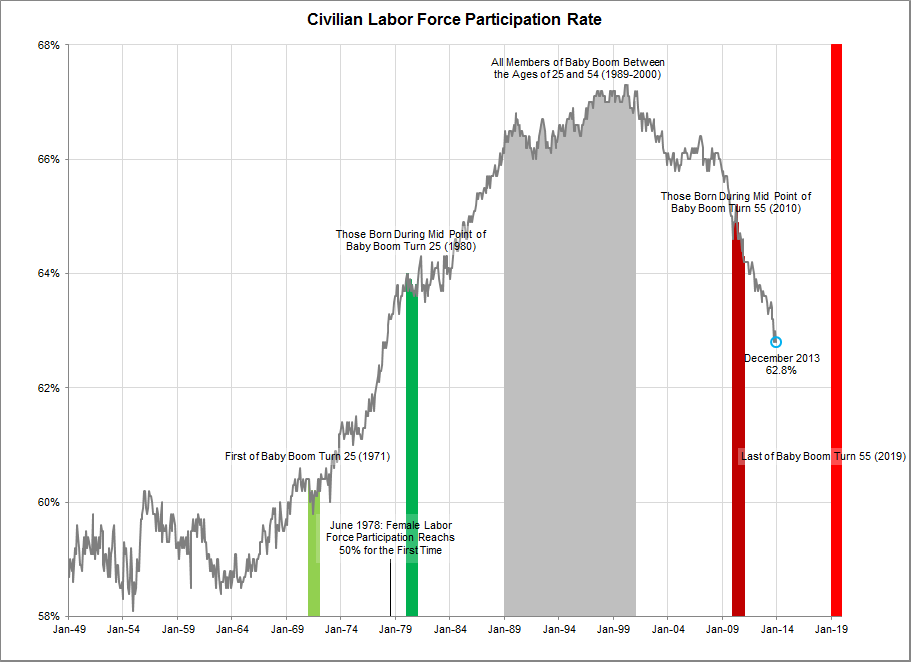Though the unemployment rate garners a large percentage of the economic headlines, there is much more to the health of a labor force than this lone statistic can relay.
Last month, the unemployment rate in the United States fell to 6.7%. This was the lowest figure since October 2008.
The decline the unemployment rate, on its own, is a positive development. However, couple the unemployment rate with the low participation rate and the story gets more interesting, because people that are not actively looking for work are not included in the unemployment rate. They are, however, included in the labor force participation rate. A declining labor force participation rate is a potential sign that individuals are dropping out of the labor force. This could distort the meaningfulness of a low unemployment rate.
Looking beyond recent history, the drop in the labor force participation rate is not a new development. Since reaching a peak in early 2000, when just north of 67% of all civilians were participating in the labor force, there has been a steady decline in the figure.
Though many reasons can lead to a decline in the participation rate one large structural development may explain this nearly 15 year deterioration; demographics.
The age range that an individual is most likely to work is between 25 and 54. As the chart below illustrates, the percentage of people in the United States that are between 25 and 54 has been falling since 1997. This is not too far from when the labor force participation rate began moving lower.
Interestingly the number of 25 and 54 year old individuals as a percentage of the population was higher in the early 1950s as than it was at the 1990s peak. This will be addressed later.
Two major developments can help explain the long term changes in the labor force participation rate. First, the explosion in the early 1970s was by and large due to the ever rising number of females joining the labor force. Second, the plateau of the labor force participation rate in the 1990s, and current decline, is in large part due to many individuals from the baby boom generation moving out of the high labor force participation years – age 25 to 54 years old.
The percentage of individuals, in the labor force and between the ages of 25 and 54 has never been higher than it was during the mid to late 1990s.
After looking beyond the headline unemployment figure it appears that changing demographics are contributing to the declining labor force participation rate.
Regardless of the proportion of the reasons, the consequences of the decline in the labor force participation rate can have a real impact on the economy. All else equal, a higher percentage of demand for goods and services may have to come from savings, investment income and debt rather than wages if the rate continues on its downward trend.
Data Source: U.S. Bureau of Labor Statistics
